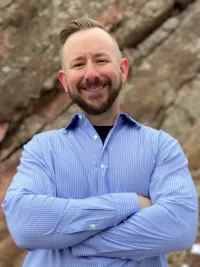Two Consultants on Leadership: Who is Responsible for “Owning” Safety?
“Owning” Safety
Who owns safety inside your organization? Your senior leaders might point to the front line and say something like, “Safety is ultimately the responsibility of the worker; it’s their life at risk.” Frontline workers might point upward and say senior leaders own safety. Operations might point to the safety department and vice versa. Without agreement on who is ultimately responsible for safety, incidents and near misses often lead to finger-pointing. And, with no one to drive change inside the organization, people tend to find fault instead of working together to learn, develop, and implement timely solutions. This blog is dedicated to helping organizations determine who is ultimately responsible for safety.
Judy Agnew, Ph.D., Senior Vice President
The short answer to this question is, everyone owns safety. In the highest-performing safety cultures, everyone from the boardroom to the front line believes they are accountable for safety. That means that safety is integrated into their daily lives. It’s embedded in all discussions. It influences their behavior, it’s considered in all decisions, and it informs them of their priorities.
That said, while everyone should own their piece of safety, it is senior leadership who is ultimately responsible. Creating a culture where everyone owns safety requires first defining what it means to “own safety” in each role. This involves pinpointing expectations at each level of the organization. What “owning safety” looks like at the front line is different from what it looks like for a middle manager or a safety professional. The bottom line is that everyone has a role to play. The key is being very clear about what behaviors are required. Once that is established, the next critical step is developing a tight, positive accountability system to ensure the identified behaviors happen consistently. This is where senior management comes in. At ADI we talk about cascaded accountability around safety, which means accountability must start at the top (hence senior leaders are ultimately responsible), but must cascade down through the organization. In our experience, when senior leaders are fully engaged in the positive accountability process, the rest of the organization follows suit.
Simply saying “everyone is responsible for safety” is unlikely to change anything. Defining ownership behaviorally and holding people accountable (starting with senior leadership) is the only way to ensure everyone truly takes ownership for safety.
Bryan Shelton, M.S., Senior Consultant
The most senior leaders in the organization own and are ultimately responsible for safety. Behavioral science shows us how the world around us influences our behavior. People behave in the context of their workplace, systems, processes, cultural norms, work as designed, and leadership practices. Who has the most influence on all those factors? Our most senior leaders. This begins with developing the mission, vision, and values to include safe profitability in how the organization operates.
It also includes prioritizing safety in daily operations through initiatives like:
- Making capital investments in safe production;
- Aligning leadership incentives and creating positive accountability to drive safety;
- Adopting safe-production measures as the key metrics to be tracked and reviewed;
- Cascading the priority of safe production to all levels of leadership;
- Establishing systems, processes, and procedures that promote working safely;
- Fostering cultural and leadership practices that positively reinforce safe work practices; and
- Creating an environment where learning is the major objective and everyone in the organization lives safety as a core value.
While all these initiatives are easier said than done, the responsibility to make this happen is the responsibility of senior leaders. Without senior leaders actively promoting safety in these ways, they send a clear message to everyone else in the organization. When organizations cut funding for safety initiatives (or don’t fund them in the first place), prioritize production over safety, prioritize profit over proper staffing, create punitive leadership practices, and fail to remove barriers to the work, the message they are sending is that safety is less important than profits. However, when senior leaders do make safety the priority, it actively promotes alignment of leadership practices and worker behaviors throughout the organization towards the goal of safe production. Dr. Aubrey Daniels often said the following statement when working with leaders, “What a leader finds interesting, workers find fascinating.” Meaning, if senior leaders make safety the priority for them, it allows safety to be the priority for the rest of the organization.
Final Thoughts
Senior leaders are the ultimate drivers of safe-production and safe-profitability. To highlight one of Judy’s points, while senior leaders ultimately own safety, each level inside an organization has a role to play. Senior leaders have the responsibility to design an environment that cultivates and reinforces the behaviors of others. Once this is done, the organization will be on the path to developing a high-performing safety culture. Safety is not something that gets in the way of organizational success but instead should be how success is defined. Identifying someone, or a small group of people, who are ultimately accountable for safety is a good first step.




